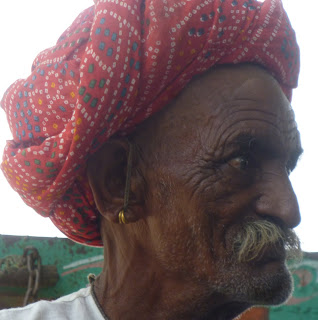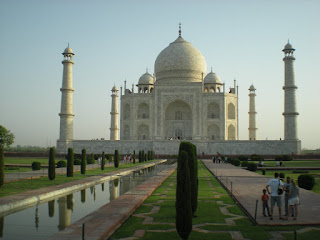When you go some place that changes you or have an experience that transforms you, it’s hard to comprehend that change. Sometimes it’s an idea, something creeping inside you, deep down, fermenting into some greater purpose. Perhaps it’s a something you saw, a scent up your nose, or a honk in your ear. This spark can foster inside you for days, months, years, who knows when or in what form it will bloom into being. For me, India was one such experience.
Staring outside the back of the bus. A hole-ridden, dirt road bobbed my head. Tents. Hundreds of them. Black trash bags draped over bamboo poles. Two kids crawl out, boy and a girl. Siblings? Torn shorts, no shirts. Chest bones lifting their skin, like the label-stripped ribs of the tin cans at their feet. They held hands. Walked into the dusty dusk. Burlap sack in each hand….Trash pickers? Notes from the bus ride from Dehli to Agra.
When did we define this notion of progress? This idea of infinite growth. Always pushing forward, further, and on to the future! Can we never sit back, relax, and say, “we’ve made it.” The march of civilization would trample right over that person. But if we don’t slow down how do these people I see out of the window, the sleeping homeless covering miles of sidewalk, the scavengers, the shirtless, the hopeless, the forgotten; how do they catch up? And this progress, for what? Kool-aid and frozen pizza? Why is progress always forward, aren’t there any other trajectories or possible courses of action. Can’t you take a forward step in any direction, it just seems backwards from your old perspective, but don’t we need a new direction?
I smell. Manure. Fresh. I see. Orange Sari’s draped over the women’s heads. Curious eyes peeking out. Curious children clinging. Bushy mustaches. Chase would be jealous. Come see! Wheat. Oats. Mustard. Loamy soil. Livestock. Laughter. Proud of their plot. Community empowerment. Interdependence. Life in the desert. Oasis among seas of sand. Notes from Rajhastan village meeting.
This community lives in the dessert of Rajhastan. It was over 120 degrees the day I went to visit this community, pretty average there. But there, in this sea of sand, the most desolate of landscapes and desperate of situations, these people built an oasis. An oasis of food, or life, or water, but even more, of community. A community that supports each other, thrives off of each other, helps and educates each other. It’s not about singular development, it’s about encompassing development; an entire community lifting itself up together. This place thrives off of a social capital, a trust; something dead in so many parts of the world.
This is just two small paragraphs from a notebook of experiences, too many to fathom at any one given time. But these encounters, dialogues, interactions, happenings, they all take root. Like a tree growing in reverse, root tips burrowing and searching, joining, entwining, and blossoming into the leaves that change and transform one’s life. This experience will forever live with me, and forever affect my life. As Jeff Johnson said in 180 South, “The best journeys answer questions that in the beginning you didn't even think to ask.”
















